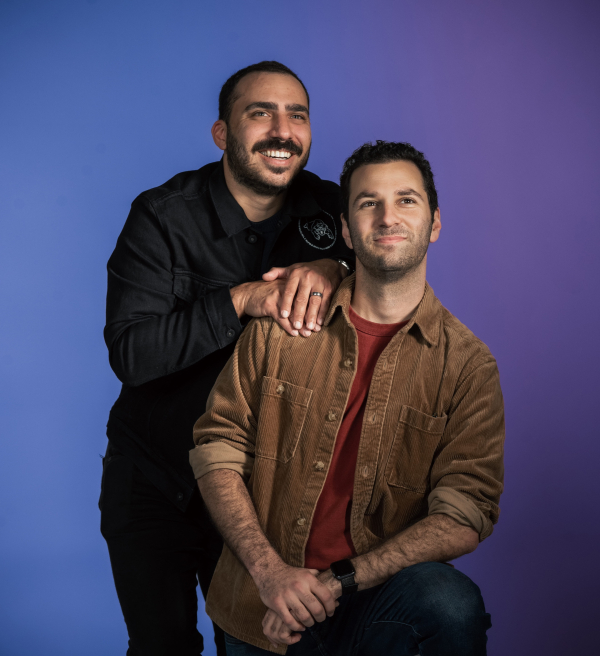You’ve always had a way with words, an ability to reel people in with your storytelling. How about using that talent as a copywriter? It sounds like a good idea if we’ve ever heard one. Read on to find out everything there is to know about the job.
What exactly does a copywriter do?
Good copywriting can sell products; great copywriting can make a company.
A copywriter creates clear, compelling copy to sell products and educate and engage consumers, flexing persuasive writing muscle on websites, blog posts, press releases, product descriptions, email blasts and sales letters, print ads, banner advertising, newsletters, white papers, PSAs, social media platforms, including Twitter and Instagram, and other marketing communication vehicles.
Copywriters may also produce internal materials versus external marketing campaigns, drafting internal memos, policies, employer brand material, surveys, etc.
The job description and daily routine may also entail brainstorming concepts and developing storyboards, working with marketing and other creative departments to develop communication strategies, and ensuring consistent brand messaging across print, TV, radio, direct mail, and other communication channels, including voice and tone.
A typical day on the job might include researching a topic online or conducting an interview, figuring out how to convey an idea to a specific audience, writing and editing copy, and finding images to accompany the content, says POP Qs Party Games owner Susan Hawkins, who has more than 25 years of copywriting experience, including several as an SEO copywriter.
What skills are required as a copywriter?
Writing skills, of course. But we’re talking about more than the ability to string together a coherent sentence. “As a professional, you have to know how to write copy that sells to the client’s specific audience, agency or business,” says freelance copywriter Helen Holt of Writing-preneur Copywriting Services.
Grammar, spelling, and punctuation count, too, adds Hawkins. “Know the difference between ‘everyday’ and the phrase ‘every day’; they’re not interchangeable. Spelling can make or break your career.”
The ability to write for any audience and superior research skills are also crucial, as is adhering to deadlines. “If you can’t deliver quality content on a given deadline, you probably won’t make it as a copywriter,” says Hawkins.
Lastly, you must be able to follow directions as a big part of your skill set. This is especially true for freelancers hired to listen to what someone is looking for and execute that vision. “A copywriter’s job is providing deliverables,” says Holt, “custom made to order.”
How important are digital skills?
In a word: very. Writing content is no longer enough. “You have to know how to optimize the content to drive traffic to your client’s website, landing page or blog,” says Holt.
This means keeping current with digital technology, including Google’s algorithm changes, so you know which search engine optimization (SEO) techniques are most effective, she notes.
Who is a copywriter’s boss?
If you’re freelance, you’ll likely report to your client’s marketing director. If you work for an agency or a company, you’ll probably take your cues from an advertising, promotions, or marketing director.
How do I get ahead as a copywriter?
Practice writing and develop a style, advises Hawkins. And for the love of chocolate, don’t ever, ever plagiarize. “You’ll be outed faster than a cheating politician,” she says.
How can someone break into copywriting?
A bachelor’s degree in something like journalism, English or marketing can help, but a powerhouse portfolio filled with an array of samples you created for online copywriting classes or internships or while lending your services to a nonprofit is what will wow potential employers.
The impact of copywriting on branding
A significant part of a copywriter’s role is contributing to a brand’s identity. While marketing executives may set the overarching brand strategy, the copywriter is often responsible for executing this vision through the written word.
Copywriters help define the brand voice, ensuring consistency across all channels. Whether it’s an advertisement, a social media post, or an email campaign, the language used must align with the brand’s personality and objectives. A skilled copywriter can elevate a brand, making it more memorable and relatable to its target audience.
How copywriting has evolved with digital media
The scope of copywriting has expanded significantly with the rise of digital media. Copywriters must now adapt to formats like SEO-friendly articles, video scripts, and even short-form content for platforms like Twitter or TikTok.
This calls for versatility and a deep understanding of how different platforms engage their audiences. The key is to produce content that is well-written and optimized for the platform it’s presented on, ensuring maximum reach and engagement.
How are copywriters paid, and how much?
Copywriting can offer a diverse range of financial prospects. Freelancers often charge per word, per hour, or per project, giving them the flexibility to set their rates.
On the other hand, those employed in agencies or corporations may have a fixed salary with benefits. Glassdoor currently pegs the salary for an average copywriter at about $73,000, but there are a lot of differences based on location and seniority. Entry-level positions often start at a modest pay scale but can quickly progress as one gains experience and expertise.
Specializing in lucrative industries like tech or healthcare can also contribute to higher earnings.
Necessary tools and software for modern copywriting
The modern copywriter must be proficient in various tools beyond just a word processor. Familiarity with content management systems (CMS) like WordPress, SEO tools like SEMrush or Ahrefs, and basic HTML coding can provide a significant advantage.
Additionally, navigating design software like Adobe Photoshop or Canva can be a plus when working in smaller teams with more fluid roles. You may also want to know about “cheaty” AI software systems like Jasper because they are handy in copywriting.
Ongoing learning and development
The industry is always evolving, making continuous learning crucial for career growth. This could mean taking courses on new writing techniques, attending workshops to understand consumer psychology, or staying updated with the latest digital marketing trends.
One of the best ways to continue honing your craft is also through personal blogging. Running your blog can help copywriters refine their voice and hone their technical skills. Though it may be difficult to write during a job that requires heavy writing, blogging can be a great way to stay at the top of your game.
Copywriters should also be open to feedback and continually refine their craft based on performance metrics and audience engagement. Keeping a finger on the pulse of cultural shifts and emerging platforms can provide a competitive edge.
Wrapping up: the copywriter’s journey
So there you have it, word wizards and phrase finessers – a comprehensive lowdown on the exhilarating world of copywriting. It’s a realm where your love for words meets the high-stakes game of marketing; your sentences can make or break a brand, and your voice can echo across a myriad of platforms.
Remember, as a copywriter, you’re not just playing with words; you’re sculpting them into something persuasive, engaging, and utterly unputdownable. Whether you’re crafting a snazzy tweet, a compelling product description, or an SEO-optimized blog post, your words are the silent yet mighty heroes of the marketing world.
Sure, the path may have its share of eye-roll-inducing revisions and “back to the drawing board” moments. But hey, that’s part of the charm! Each word you pen down is a step towards mastering this art. And let’s not forget the thrill of seeing your work out there in the wild – nudging consumer behavior, one well-placed adjective at a time.
So, gear up, future copy czars! Keep sharpening those skills, keep adapting to the digital dance, and most importantly, keep your passion for words burning bright. The world of copywriting awaits your unique flair. Go forth and create copy that doesn’t just sell, but sizzles and soars!
Get started in a new copywriter job role today. Check out our special job board for media jobs.
Additional Resources
Sample Interview Questions for Copywriters
Here’s a set of questions tailored for interviewing potential copywriters, designed to probe their technical abilities and creative and strategic thinking. You can use these as a guide when breaking into the role for interview prep or hiring copywriters as managers.
1. Creative Flair and Writing Skills
- Can you describe your creative writing process? – This question aims to understand their approach to crafting copy, from initial concept to final draft.
- How do you adapt your writing style to different brands or audiences? – This tests their versatility and ability to switch between different tones and styles.
- Could you share an example of a writing project you’re particularly proud of? – Encourages them to showcase their best work and explain why it stands out.
2. Technical Expertise and Adaptability
- How do you stay updated with the latest copywriting and digital marketing trends? – Assesses their commitment to ongoing learning and adaptability.
- What experience do you have with SEO and how do you integrate it into your writing? – Gauges their understanding of SEO and its application in writing.
- Can you discuss a time when you had to write under tight deadlines? How did you manage? – Tests their time management skills and ability to deliver under pressure.
3. Conceptual Thinking and Strategy
- How do you create a content strategy for a new brand or product? – Probes their strategic thinking and ability to plan content.
- Describe a challenging project where you had to research extensively. How did you go about it? – Looks at their research skills and how they tackle complex subjects.
- Can you give an example of how you’ve used storytelling in your copy to engage an audience? – Checks their understanding of storytelling in marketing.
4. Collaboration and Feedback
- How do you handle feedback and revisions from clients or team members? – Tests their receptivity to feedback and collaborative skills.
- Describe a situation where you had to work closely with a design team. How did you ensure the text and visuals complemented each other? – Explores their ability to work in tandem with other creative professionals.
5. Ethical and Professional Standards
- What are your views on ethical considerations in copywriting, such as avoiding misleading content? – Assesses their ethical standards and professionalism.
- How do you ensure your copy is creative and aligns with the brand’s guidelines? – Looks at their ability to balance creativity with brand consistency.
6. Personal Insight and Motivation
- What inspires you in your writing? – Aims to understand their sources of inspiration and passion for writing.
- Where do you see your copywriting career in the next five years? – Sheds light on their career aspirations and commitment to the field.
FAQs on Copywriting
Q: What role does storytelling play in effective copywriting?
A: Storytelling is a crucial element in copywriting as it helps engage the audience, build a narrative around a product or brand, and create an emotional connection with consumers. Effective storytelling in copywriting can elevate mundane information into compelling content that captivates readers.
Q: How significant is understanding consumer psychology for a copywriter?
A: Understanding consumer psychology is immensely important for a copywriter. It involves grasping what motivates consumers, how they think, and what influences their purchasing decisions. This knowledge allows copywriters to craft messages that resonate deeply with the target audience, influencing their perceptions and actions.
Q: Can copywriters specialize in specific industries, and what are the benefits?
A: Yes, copywriters can specialize in specific industries such as technology, healthcare, or finance. Specialization allows them to gain in-depth knowledge of the industry’s language, audience, and challenges, enabling them to produce more relevant and authoritative content, often leading to higher demand and better compensation.
Q: What is the importance of SEO skills in modern Internet copywriting?
A: SEO skills are vital in modern copywriting as they ensure the content is engaging and discoverable by search engines. A copywriter with SEO skills can optimize content with relevant keywords, meta tags, and structure, improving a website’s search engine rankings and visibility.
Q: How does a copywriter balance creativity with the need to adhere to brand guidelines?
A: Balancing creativity and brand guidelines involves understanding the core values and voice of the brand while innovatively conveying the message. Copywriters must be creative within the constraints of the brand’s identity, ensuring consistency and alignment with the overall marketing strategy.
Q: What are the writing challenges for different digital platforms like Twitter or TikTok?
A: Writing for digital platforms like Twitter or TikTok presents challenges such as adapting to varying content formats, character limits, and audience preferences. Copywriters must be versatile and capable of crafting concise, engaging content that fits each platform’s specific requirements, culture, and constraints imposed by graphic design.
Q: How do copywriters measure the effectiveness of their work?
A: Copywriters measure the effectiveness of their work through performance metrics like click-through rates, engagement levels, conversion rates, and SEO rankings. In publishing and traditional media, feedback may come from writers, editors, and customers. Feedback from clients and audience responses also provide valuable insights into the impact of the content.
Q: What are the ethical considerations in copywriting?
A: Ethical considerations in copywriting include avoiding misleading or false information, respecting copyright and intellectual property rights, and maintaining transparency in advertising. Ethical copywriting upholds integrity and trustworthiness, vital for building long-term relationships with audiences.
Q: How can a copywriter stay updated with evolving digital marketing trends?
A: A copywriter can stay updated with evolving digital marketing trends by subscribing to industry newsletters, following thought leaders on social media, attending webinars and workshops, and participating in professional networks and forums dedicated to copywriting and marketing. Continuous learning and adaptability are key.
Q: What is the role of feedback and revision in the copywriting process?
A: Feedback and revision are integral parts of the copywriting process. They involve refining and improving the content based on client or peer reviews, ensuring that the final copy meets the objectives, resonates with the target audience, and aligns with the brand’s voice and strategy.
Q: What is the role of persuasion in effective copywriting?
A: The role of persuasion in effective copywriting is central and multifaceted. Persuasive copywriting aims to influence readers’ behavior or beliefs by appealing to their emotions, logic, or trust. This is achieved through various techniques such as storytelling, compelling language, understanding the audience’s needs and desires, and presenting benefits in a way that resonates with them. Effective persuasive writing often leads the reader towards making a decision, such as purchasing a product, signing up for a service, or adopting a new viewpoint by making a compelling case that aligns with the reader’s interests and values.










